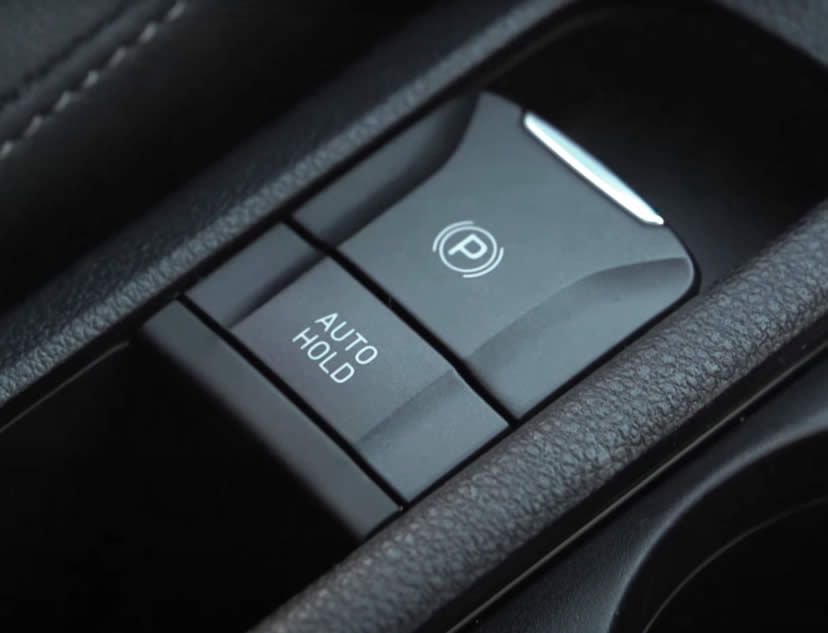Auto hold is one of those features in a car that you never realised you needed until you used it. With many of us driving in cities with relentless stop / start traffic, auto hold helps to reduce those tedious parts of driving.
What is Auto Hold on a Car?
Auto hold is a system that automatically applies the brakes and holds your vehicle stationary after you have come to a complete stop and released the foot brake.
Why is Auto Hold Beneficial in a Car?
Some drivers struggle to prevent rolling when moving off on a hill and in this situation, auto hold will prevent the car from rolling backwards. Another benefit of auto hold is when driving in busy start / stop traffic. Once you’ve braked to a stop, auto hold automatically applies the brakes, meaning that you do not need to keep your foot pressed on the brake pedal and there’s no need to apply the parking brake.
This may not sound like much of a big deal, but for those that spend considerable time in busy city traffic, auto hold provides that extra assistance for making driving a little easier.
How Does Auto Hold Work on a Car?
Auto hold makes use of your vehicle’s ESP (Electronic Stability Programme) hydraulic unit and the ABS (Anti-lock Braking System). When you use your footbrake to come to a complete stop, wheels speed sensors used by the ABS determine that the vehicle is at a standstill and then the ESP hydraulic unit applies all four hydraulic brakes automatically.
Sensors determine the brake pressure that you applied to stop the vehicle and auto hold keeps the same brake pressure to keep the vehicle stationary. If any movement is detected by the ABS wheel speed sensors, the ESP system will apply greater hydraulic brake force to prevent the car from moving.
You can take your foot off the brake pedal and all four wheel brakes will stay on. Once you press the accelerator pedal or in the case of manual cars, release the clutch pedal, auto hold releases the brakes.
When you brake your vehicle to a stop and switch off the engine, auto hold will no longer operate and instead, the parking brake assumes the holding function.
Is Auto Hold on all Cars?
No, but auto hold is becoming increasingly common on cars with electronic parking brakes. The traditional handbrake lever is being phased in favour of electronic parking brakes. Some 83 percent of new cars now have electronic parking brakes and with that technology, you’ll often have hill-start assist and auto hold.
Is Auto Hold Present in both Manual and Automatic Cars?
The auto hold feature can be present on both manual and automatic cars. On automatic cars, auto hold keeps the car stationary by preventing the creep feature from occurring.
How Do I Know If My Car has Auto Hold?
You’ll need to have an electronic parking brake that’s operated by a switch rather than the traditional hand lever. However, not all cars with an electronic parking brake have auto hold.

If you car does have auto hold, it’ll also have an auto hold on and off button, often located next to the electronic parking brake switch. Different car manufacturers have slightly varying terms, such as auto hold or brake hold and may also use different symbols such as:

If auto hold is manually switched off via the on/off button, it stays deactivated until the drivers switches it back on. As such, some drivers are unaware of this feature.
You’ll know when it’s switched on and active because your vehicle wont move when your foot is off the brake pedal and you’ll have ‘Auto Hold’ light that illuminates on your dashboard when the system is active.
Does having auto hold all the time while driving in a busy city traffic affect your mileage or the brakes? Does it affect the battery life?
Hi Rakesh,
The auto hold feature uses the sensors used for for ABS/ESC, so it determines when the vehicle has come to a standstill before applying the brakes. As the vehicle is stationary, it will have no negative wear on the vehicle’s brakes. Auto hold is an extension of the vehicle’s parking brakes. There will be a certain amount of energy used to apply and release the auto hold brakes. Any energy in a vehicles used, ultimately uses more fuel, but the amount used by the auto hold system is negligible. The vehicle’s charging system will be more than capable of restoring any energy used by the auto hold system, regardless of how much it’s used.